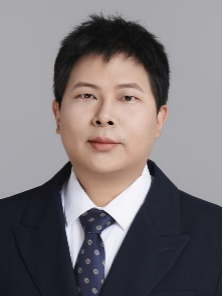Submission Deadline: 15 January 2026 View: 2869 Submit to Special Issue
Assoc. Prof. Peidong Li
Email: peidongli@scu.edu.cn
Affiliation: College of Architecture and Environment, Sichuan University, Chengdu, 610065, China
Research Interests: Fracture mechanics; Multi-physics coupling; Phase-field modeling

Dr. Ruifeng Zheng
Email: zrf@nwpu.edu.cn
Affiliation: School of Mechanics,Civil Engineering and Architecture, Northwestern Polytechnical University, Xi?an, 710129, China
Research Interests: Crack problems of multiferroic materials and quasi-crystals

Prof. Haidong Fan
Email: hfan85@scu.edu.cn
Affiliation: College of Architecture and Environment, Sichuan University, Chengdu, 610065, China
Research Interests: Metallic deformation, Multiscale simulations, Solid mechanics

Prof. Yanwei Dai
Email: ywdai@bjut.edu.cn
Affiliation: School of Mathematics, Statistics and Mechanics, Beijing University of Technology, Beijing, 100124, China
Research Interests: Fatigue and fracture modeling at elevated temperatures; multi-physics and multiscale modeling and optimization of microelectronics manufacturing and packaging; wide-bandgap semiconductors materials and reliability; and advanced packaging technology

The mechanical behavior of advanced materials, especially under extreme conditions, presents significant challenges in terms of prediction and optimization. As materials evolve to meet the demands of modern technology, from aerospace to biomedical applications, understanding and accurately simulating their mechanical properties become crucial.
This special issue focuses on the computational modeling of the mechanical behavior of advanced materials, with an emphasis on the following areas:
· Multi-physical field coupling effects on mechanical properties (e.g., thermal, mechanical, and electromagnetic interactions).
· Multi-scale modeling techniques, bridging atomic, microstructural, and macroscopic scales.
· Advanced methods for simulating deformation, damage, fracture, and failure in complex materials.
· High-performance computational techniques and algorithms for solving mechanical problems in advanced materials.
· Machine learning and data-driven approaches for enhancing the accuracy of mechanical behavior predictions.
We invite original research articles and comprehensive review papers that present new methodologies, models, and applications aimed at understanding and predicting the mechanical behavior of advanced materials. Through this special issue, we aim to contribute to the development of innovative computational tools for the analysis and design of advanced materials in engineering practice.
We look forward to your valuable contributions to this dynamic field!


 Submit a Paper
Submit a Paper Propose a Special lssue
Propose a Special lssue